Evoking timeless beauty, koi fish are instantly recognizable for their colors and unique elongated shape. They are a symbol of love and friendship in Japan. Modern koi descended from carp bred by rice farmers provide a lovely ornamental touch to a pond ecosystem. Their serene presence elevates any backyard setup for owner and visitors alike to enjoy.
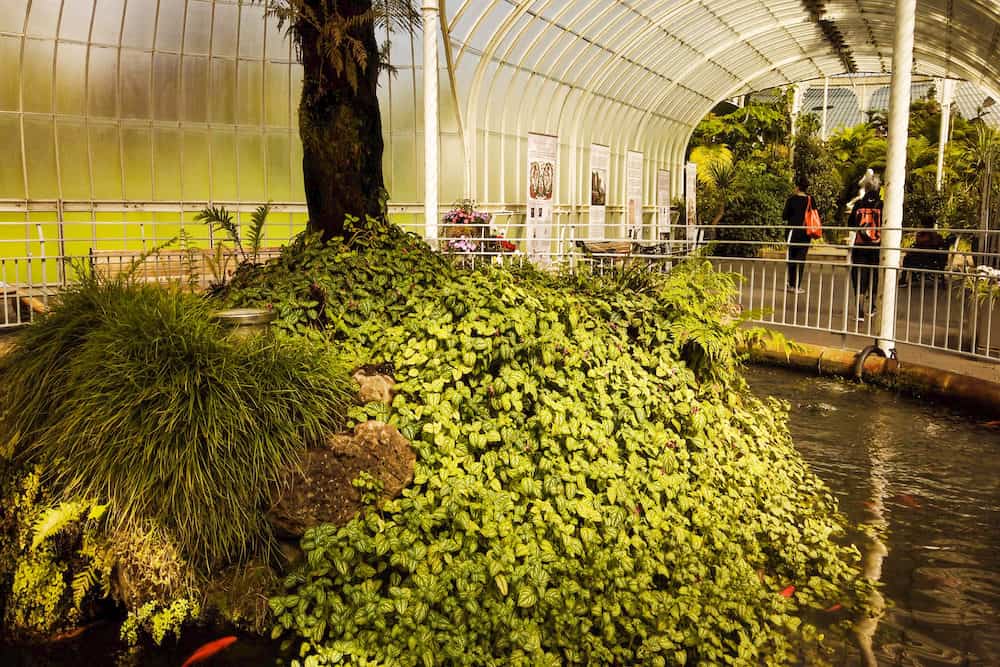
But nature is a cruel mistress, and there are biological principles at work that can turn even the most well-designed pond into a messy nightmare. Too much direct sun reaching your koi pond setup can promote excessive algae growth, upsetting the water’s chemical balance and stressing the fish’s health.
As a koi aficionado and pond owner, I’ve done some research about the best setup, and I’m now able to share my best findings with you. With a simple grasp of the organic elements in your pond, I can help you:
Follow my tips below to ensure that your lush, beautiful koi pond stays healthy and balanced.
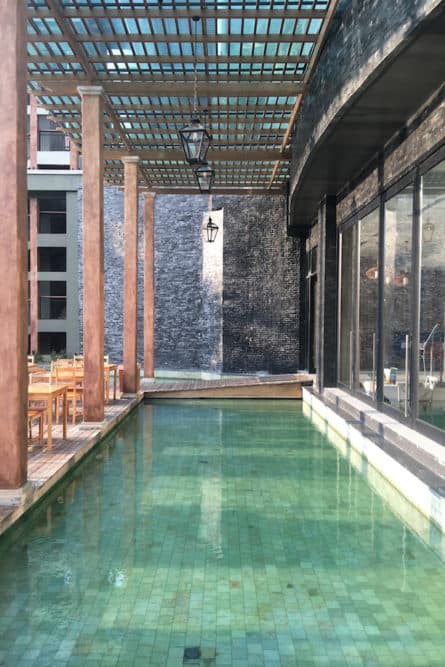
A koi pond is primarily decorative, but it should also be woven seamlessly into its ecological environment. Here are some natural pond phenomena for you to observe.
Between 10am and 4pm, the ultraviolet (UV) rays of the sun are strongest. Invisible to the eye, the majority of this type of ray reaches Earth’s surface and can even penetrate through tree leaves and other cover. This exposure hitting a koi pond can cause damage if not properly mitigated.
Another factor to keep in mind is evaporation caused by the sunlight’s touch. Routinely measure your pond’s surface level to monitor evaporation rates, which unnecessarily steal fresh water out of the koi fish pond.
Koi fish can survive in water that is between 35-90 degrees Fahrenheit, but they prefer a range of 60-75. The water temperature affects their metabolism, and at its coldest, triggers their winter phase where they retreat to the pond’s bottom and remain inactive. It’s important to keep an eye on the temperature of your pond, especially if you live in a warmer climate.
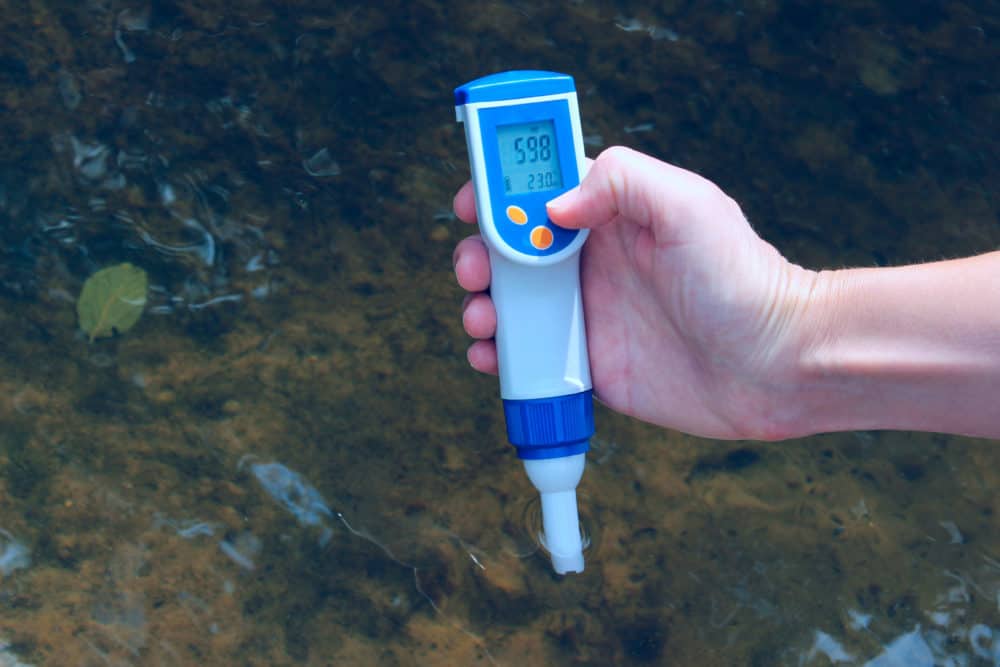
Though fish are aquatic animals, they still breathe oxygen that dissolves into the water. Sun and higher temperatures inhibit this process. If the fish don’t get enough oxygen in their system, they can become stressed.
This may be a small variable, but it is a crucial one. Test the pond water regularly to ensure a level of 7-9 milligrams for every liter of water, and you’ll have well-balanced and happy koi.
Of course, a little sun on the water’s surface creates a gorgeous shimmery effect that only adds to the koi pond appeal. But it also promotes biological processes that, if not kept properly in check, can stress your fish.
An ugly, dark green buildup isn’t pretty to look at - and the koi don’t appreciate it, either. Though some sun is necessary for visibility, too much will jumpstart algae growth that’s better to avoid. An ideal setup is part sun, part shade, so the fish have shelter options if needed.
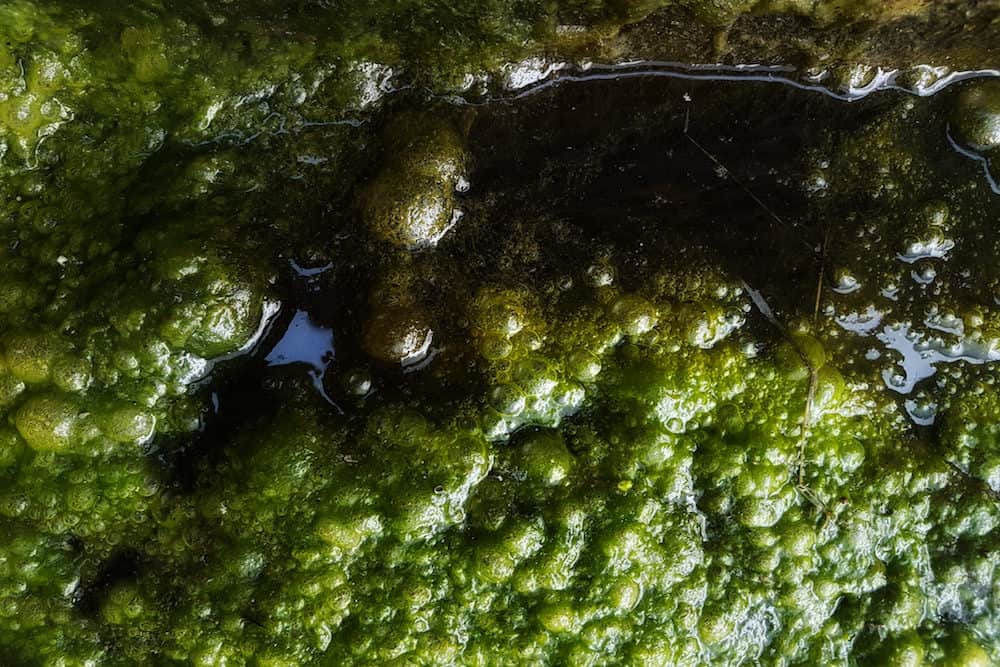
Aim for no more than six hours of sunlight directly on the water per day. Clear water helps the koi navigate your pond and show off their brilliant colors. This is also a good balance for any pond plants you might have, encouraging healthy growth without invading the fish’s space.
The shallower the pond, the more likely encouragement of algae there will be. An ideal depth for a koi pond is 2-5 feet, but no shallower than two feet at its lowest.
Besides keeping algae to a minimum, the right amount of shade provides another benefit as well: protection from predators. Carnivorous animals are everywhere! Be aware of foxes, coyotes, badgers on land, as well as hawks and herons from the sky.
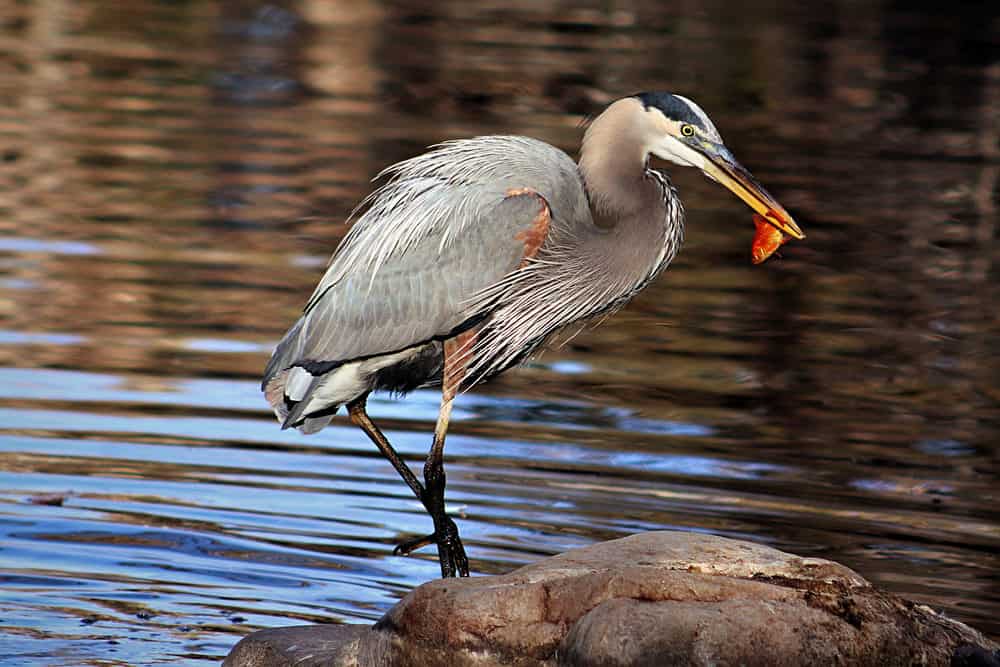
Larger animals might be tempted to think of your koi as an easy meal due to their massive size and bright colors. But with proper coverage, the pond will render your fish less accessible to hungry neighborhood creatures.
The goal of a successful koi pond isn’t merely visual - it’s also to cultivate healthy and happy fish. Now that you know why it’s important to provide shade, let’s discuss some steps you can take to do so.
The easiest way to shelter your garden pond from sunlight is with foliage. Trees, shrubs, a water hyacinth and other greenery add lushness to your pond scene while giving the micro-environment what it needs to thrive.
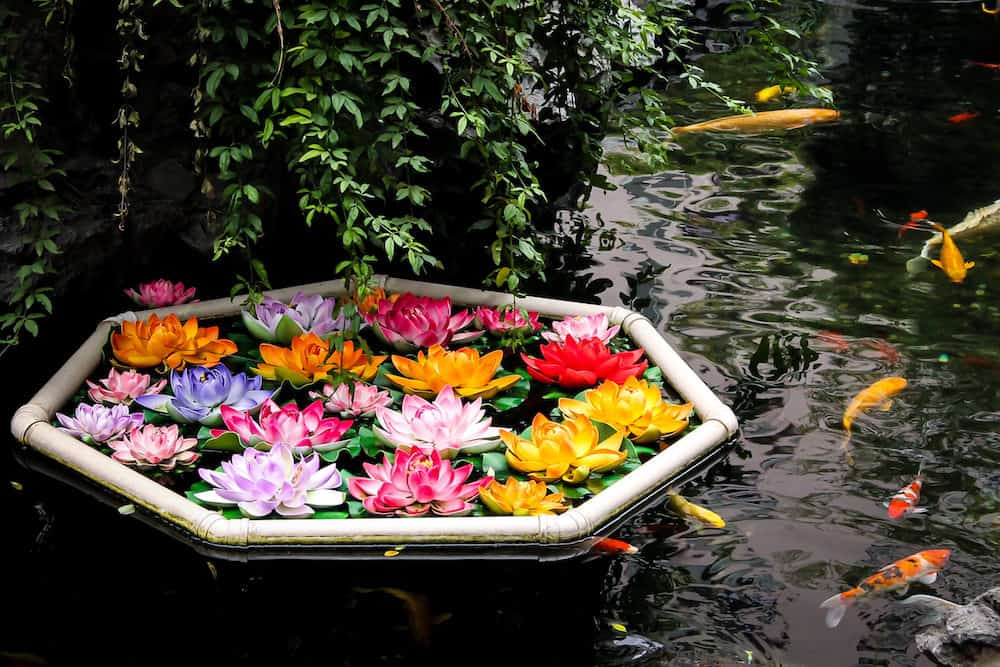
There are a myriad of gorgeous aquatic plants available on the market. A floating raft of water lilies is beautifully appealing and creates an organic shade for the fish to hide under. For depth and texture, consider varying types of submerged and emergent plants as well.
Be careful not to completely cover the backyard pond, as the koi fish and aquatic plants alike do need some sun to thrive.
Artificial dyes darken the water to a deep blue-green. The purpose of pond dyes is threefold: they add visual appeal, provide shade for the fish, and discourage algae growth. Most dyes on the market come in gallon-sized jugs and sometimes include other fish-friendly chemicals.

Barring enough plant coverage, a shade sail helps prevent the pond from overheating and also protects koi. It’s cheap and easy to DIY a pond sail at home. Simply pick up some nylon or polyethylene fabric and some metal stakes, and secure the sail above the pond wherever it’s most needed as a barrier against sunlight.
Though it doesn’t do as much to prevent algae, installing places for the koi to hide is another helpful method to deter predators. Decide which looks best for your pond - steep sides that provide vertical blockage or flatter overhangs - and then create a structure that blends into the setup for seamless functionality.



